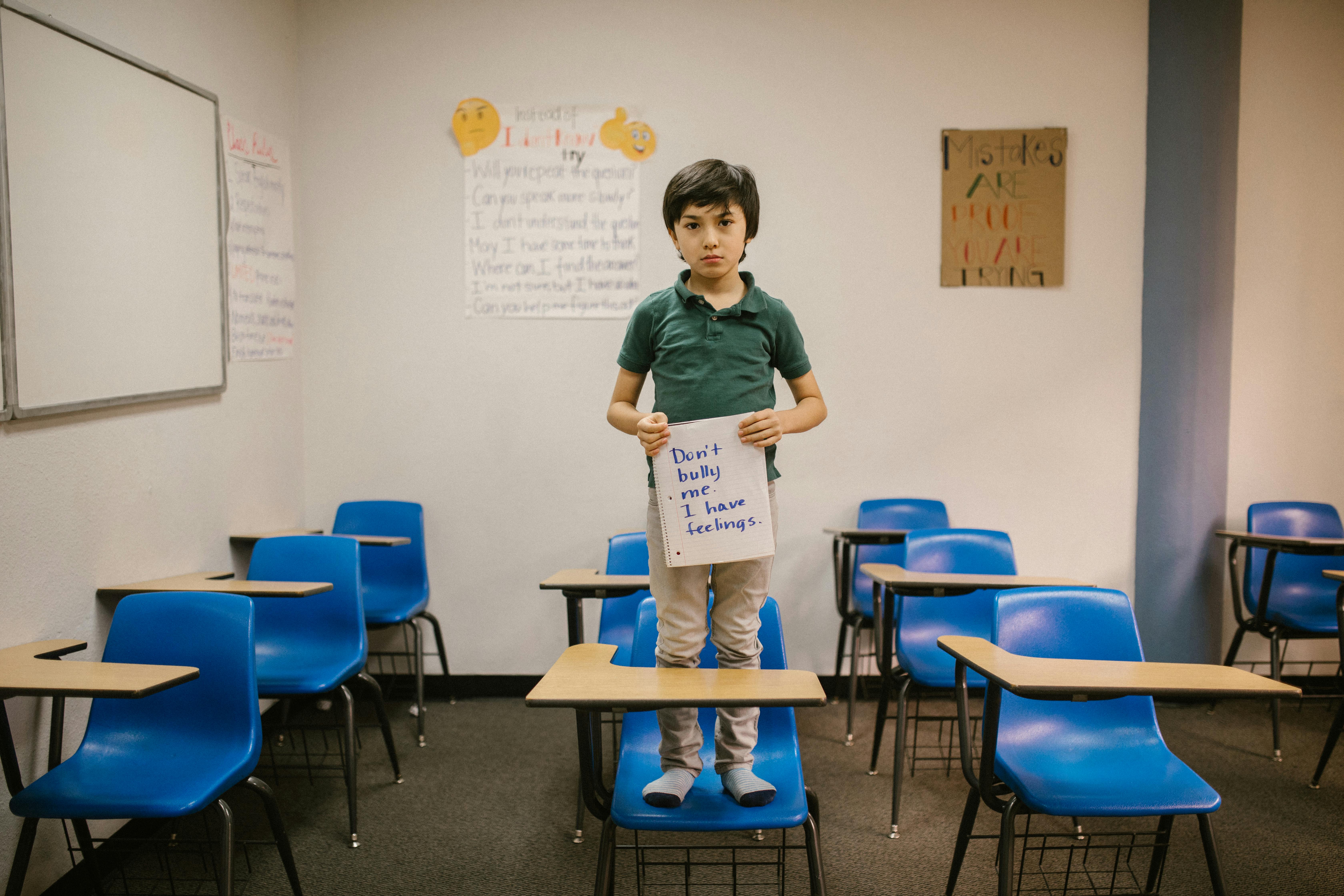In a chilling incident that shocked the sports world, a professional football star was kidnapped and held for ransom.
As the story unfolded, the most devastating revelation wasn’t the crime itself, but the identity of the perpetrators: the athlete’s own brother and close friends. Their justification?
They felt entitled to his wealth. In their minds, his success meant they deserved a share of his fortune, and his perceived lack of “sharing” justified their brutal actions.
This extreme case illuminates a disturbing truth about what happens when the seeds of entitlement, planted in childhood, grow unchecked into adulthood.
While most cases of ingratitude won’t lead to criminal behavior, the underlying mindset – “I deserve what others have” – has become increasingly prevalent in our society, manifesting in ways both subtle and severe.
Gratitude isn’t just about saying “thank you” – it’s a mindset that can profoundly impact your child’s happiness, resilience, and success in life.
This guide offers ten practical, proven strategies to help your children develop genuine gratitude and find contentment in their daily lives.
Whether you’re dealing with a toddler’s tantrums over toys or a teenager’s constant comparisons to their peers’ possessions, these approaches can help shift your child’s perspective from entitlement to appreciation.
By addressing these issues early, we can help our children develop the emotional tools they need to become secure, satisfied adults who celebrate others’ success rather than resenting it.
Why is Gratitude Important?
Imagine your seven-year-old tears through a mountain of birthday presents, barely glancing at each gift before tossing it aside looking for a particular toy.
After unwrapping the last present, they look up with a frown and ask, “You didn’t buy my toy?”
How would you feel?
In this era of instant gratification, social media comparisons, and “unboxing” videos, many children are growing up with distorted expectations about what they deserve from life and others.
They learn to expect more, appreciate less, and measure their worth against what others possess.
This entitled mindset doesn’t just hurt the individual; it damages relationships, destroys family bonds, and can lead to destructive behavior.
But there’s hope. Research consistently shows that grateful children develop into adults who:
- Build and maintain healthy relationships
- Find satisfaction in their own achievements
- Support others’ success without resentment
- Handle life’s disappointments with resilience
- Create genuine wealth through their own efforts rather than expecting it from others
Most importantly, they understand that true contentment comes not from what they receive, but from what they appreciate and contribute.
- Gratitude improves your health. It can help you feel less stressed, sleep better, and have a stronger immune system. It can also lower your blood pressure and heart rate, and reduce your risk of depression.
- Better relationships
Expressing gratitude can improve your relationships with loved ones and romantic partners.
Increased happiness
- Acknowledging your accomplishments and the support you receive from others can boost your self-esteem and self-worth.
- Grateful people can get over setbacks and challenges more easily.
- Practicing gratitude encourages you to be present and mindful of the here and now.
- Gratitude reduces negative emotions. It can decrease feelings of envy, aggression, and greed.
10 Ways to Teach Children Gratitude and Contentment
1. Model Grateful Behavior
Children learn primarily through observation, making parents their first and most important teachers of gratitude. This means going beyond the basic “please” and “thank you” to demonstrate genuine appreciation in your daily life.
Share your own gratitude openly:
- Express thankfulness for your morning coffee, a sunny day, or a kind neighbor
- Point out the efforts others make that benefit your family
- Share a daily gratitude at dinner or bedtime
- Show appreciation for your children’s positive actions, however small
Remember, children are remarkably perceptive – they’ll notice whether your gratitude is authentic or merely a performance.
2. Create Daily Gratitude Rituals
Consistency is key when teaching any valuable life skill. Incorporating gratitude into your daily routine helps make it a natural part of your child’s mindset rather than an occasional afterthought.
Simple rituals to consider:
- Morning gratitude: Start the day by naming one thing you’re looking forward to. If you’re a Christian, for instance, you can thank God every morning with your family when you wake up. The gift of life and good health are examples of things to be grateful for.
- Bedtime reflection: Share three good things that happened during the day and express your gratitude for them together as a family before you go to bed.
- Gratitude jar: Add notes about positive experiences throughout the week
- Thank-you walks: Point out beautiful or interesting things while walking together
These rituals should feel natural and enjoyable, not like forced obligations.
3. Help Children Understand the “Why” Behind Gifts and Kind Acts
When children receive gifts or experience kindness, help them understand the thought and effort behind these actions. This develops emotional intelligence and deeper appreciation.
Guide their understanding with questions like:
- “Why do you think Grandma chose this particular gift for you?”
- “How long do you think it took them to make this?”
- “What went into making this possible?”
This approach helps children recognize the intention and effort behind kind acts, fostering genuine gratitude rather than just politeness.
4. Teach Perspective Through Service
Nothing teaches gratitude quite like helping others. Engaging in age-appropriate service activities helps children develop empathy and appreciation for their own circumstances.
Service opportunities might include:
- Helping elderly neighbors with simple tasks
- Participating in food drives or toy collections
- Volunteering at animal shelters
The key is making service regular and meaningful rather than a one-time event.
5. Practice Mindful Contentment
In this age of constant comparison and FOMO (Fear of Missing Out), teaching contentment is crucial. Help your child to appreciate what they have rather than focusing on what they lack.
Strategies for fostering contentment:
- Encourage mindful moments to appreciate simple pleasures
- Limit exposure to advertising and materialistic influences
- Celebrate small wins and everyday joys
- Practice gratitude even during challenging times
6. Use Creative Expression
Art, writing, and other creative activities can help children process and express gratitude in meaningful ways.
Creative gratitude projects:
- Gratitude journal with words and drawings
- Photo essays of favorite people, places, or things
- Thank-you videos for special people
- Gratitude collages using magazine cutouts
These activities make gratitude tangible and fun while reinforcing its importance. Depending on children’s age, let them write the things they’re grateful for daily in their journals. Younger children will be more attracted to journals with drawings.
7. Handle Complaints Constructively
When children complain (as they inevitably will), these moments become golden opportunities to cultivate gratitude.
The key isn’t to dismiss their feelings or lecture them about being thankful, but rather to guide them toward a more balanced perspective.
Start by validating their emotions. When a child complains about having rice again for dinner, resist the urge to immediately remind them about hungry children elsewhere. Instead, try:
“I understand you’re disappointed about having rice again. Me too, I wish to eat something else tonight. Let’s think about what makes this meal special.”
You can talk about the fact that Mom made their favorite sauce, or that you get to enjoy it together as a family.
- Transform Comparisons into Appreciation
Children often complain about what others have that they don’t. When your child says, “Sarah has a bigger room!” try this approach:
“Let’s play a fun game. Can you name three things you love about your room? I’ll start – I love your cozy reading corner with all your favorite books…”
- The “Yes, And” Technique
When facing complaints, use the “Yes, and” approach to acknowledge feelings while gently redirecting focus. For example:
– Child: “This homework is too hard!”
– Parent: “Yes, this math problem is quite challenging. Imagine how proud you’ll feel when you figure it out. Remember last week when you solved that tricky problem? How about we break this one down together?”
- Turn Complaints into Problem-Solving Opportunities
Help children move from passive complaining to active problem-solving:
1. First, acknowledge: “I understand you’re frustrated that you can’t have the new video game right now.”
2. Then prompt thinking: “What are some ways you could work toward getting it?”
3. Guide solution-finding: “Could you save your allowance? Maybe do extra chores?”
4. Celebrate the process: “I’m impressed with how you’re making a plan instead of just feeling upset.”
- The Perspective Shift Challenge
When children complain about situations, guide them through these questions:
– “What’s one good thing about this situation?”
– “How might this help you grow stronger?”
– “Who might we thank for trying to help us here?”
For example, when a rainy day ruins outdoor plans:
“I know you’re disappointed about missing the park. Let’s think about what we can only do on rainy days that’s special. Plus, who benefits from this rain? The flowers? The farmers?”
- Model Resilient Responses
Children learn most from watching how we handle our own disappointments. When you face frustrations:
1. Voice your initial disappointment honestly
2. Talk through your perspective shift out loud
3. Demonstrate finding solutions or silver linings
For instance: “Oh no, the store is closed! I’m really disappointed because I wanted to get ingredients for jollof rice… Well, this gives us a chance to try that new recipe with the ingredients we already have. Can you help me look through the pantry?”
- The Gratitude Redirect
Transform common complaints into gratitude prompts:
– “I hate these hand-me-downs!” → “These clothes remind me how much your cousin Amy cares about sharing with you. What’s your favorite thing she’s given you?”
- Building Long-Term Perspective
Help children develop broader awareness by:
– Discussing how situations could be different or worse
– Highlighting others’ efforts that they might take for granted
– Encouraging them to think about future benefits of current challenges
– Sharing stories of how past difficulties led to positive outcomes
The goal isn’t to eliminate complaints entirely – that’s unrealistic and unnecessary. Instead, aim to help children develop the habit of moving through complaints to find gratitude, solutions, and opportunities for growth.
This skill will serve them well throughout their lives, helping them maintain perspective and find contentment even in challenging circumstances.
8. Create Gratitude Traditions
Special traditions around holidays, birthdays, and other celebrations can reinforce gratitude while creating lasting memories.
Meaningful traditions might include:
- Writing appreciation letters to family members during holidays
- Creating handmade gifts that require time and thought
- Donating toys before receiving new ones
- Celebrating others’ achievements with genuine enthusiasm
9. Practice Delayed Gratification
Teaching children to wait for and truly appreciate rewards helps build both gratitude and character.
Ways to encourage delayed gratification:
- Create simple waiting games for younger children
- Help children save for special purchases
- Involve them in planning and preparing for special events
- Celebrate the anticipation as well as the reward
10. Embrace Imperfection and Growth
Remember that developing gratitude is a journey, not a destination. Children (and adults) will have ungrateful moments, and that’s okay.
Keys to maintaining perspective:
- Celebrate progress rather than expecting perfection
- Use setbacks as learning opportunities
- Acknowledge that gratitude takes practice
- Keep the focus on growth rather than guilt
Conclusion on How to Teach Children Gratitude and Contentment
Raising grateful children requires patience, consistency, and intentional effort.
The strategies outlined above aren’t meant to be implemented all at once – start with one or two that resonate with your family and build from there.
Remember that every small step toward gratitude creates ripples that can influence your child’s entire life.
Most importantly, approach this journey with joy and authenticity. When children see that gratitude genuinely enhances their parents’ lives, they’re more likely to embrace it in their own.
When we help our children develop grateful hearts, we’re giving them one of life’s most valuable gifts – the ability to find joy and meaning in both life’s big moments and its simple pleasures.
Which of these tips would you like to try out first? Start today, and watch as gratitude transforms not just your children, but your entire family’s perspective on life.
Share this post with someone and don’t forget to share your experience raising your children with gratitude. We’d love to read your comments.





Add comment